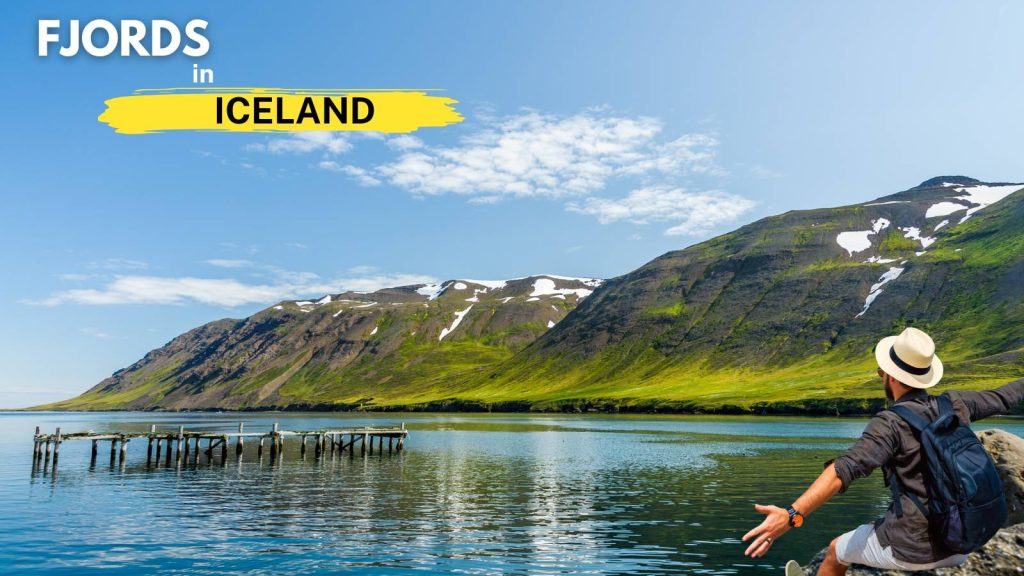East Iceland is a region often overlooked by the majority of travelers, yet it holds some of the most breathtaking landscapes in the country. Characterized by steep mountains, cascading waterfalls, and remote coastal villages, this region is home to fjords in Iceland that remain largely untouched by mass tourism.
For adventurous travelers seeking solitude, scenic beauty, and authentic Icelandic culture, East Iceland’s hidden fjords are a treasure trove waiting to be discovered. Here are the top 10 hidden fjords in East Iceland that most tourists miss.
Why East Iceland is a Hidden Gem
While the South Coast and Golden Circle receive the bulk of tourist traffic, East Iceland remains peaceful and unspoiled. The fjords here are longer, narrower, and more secluded than in other regions, providing a raw and dramatic landscape. Many of these fjords are flanked by towering mountains and dotted with quaint fishing villages, offering travelers a chance to experience Icelandic life far from the crowds.
Exploring these hidden fjords is not just about sightseeing—it’s about immersion in nature, local culture, and the tranquility that comes from venturing off the beaten path.
1. Seyoisfjorour – Artistic Heaven
Seyðisfjörður is often referred to as the cultural heart of East Iceland. Known for its colorful wooden houses and vibrant arts scene, this fjord offers a unique blend of natural beauty and artistic expression. Nestled at the head of the fjord, the town of Seyðisfjörður is a haven for painters, musicians, and photographers.
Visitors can explore hiking trails that lead to stunning waterfalls, such as Gufufoss, or enjoy the local cafés and craft shops in town. Seyðisfjörður is easily accessible via a scenic mountain pass, and the town’s ferry connection from mainland Europe makes it a convenient yet secluded stop. The combination of culture, scenery, and community makes Seyðisfjörður a must-visit hidden gem.
2. Mjoifjorour – Remote Wilderness
Mjóifjörður, meaning “Narrow Fjord,” is one of the most isolated fjords in East Iceland. Reaching this fjord requires a drive along rugged mountain roads, which is part of the adventure. The fjord is surrounded by dramatic cliffs and offers some of the most pristine landscapes in Iceland.
Hiking enthusiasts will find trails that provide panoramic views of the fjord and the surrounding wilderness. Wildlife, including reindeer and seabirds, is abundant here, making it ideal for nature photography.
Accommodation is limited to a few guesthouses, reinforcing the sense of seclusion and authenticity. Visiting Mjóifjörður is about escaping the tourist trail and embracing the raw beauty of Iceland’s East Fjords.
3. Borgarfjorour Eystri – Puffins and Peace
Borgarfjörður Eystri is a dream for bird lovers and those seeking solitude. The fjord is famous for its puffin colonies, particularly at Hafnarhólmi, where visitors can observe these charming birds up close. The surrounding area is perfect for hiking, with trails leading to rugged cliffs, hidden beaches, and panoramic fjord views.
The small village of Borgarfjörður Eystri provides cozy accommodations, local cafés, and cultural insights, offering travelers a blend of adventure and comfort. With its dramatic scenery and peaceful atmosphere, this fjord is one of the best-kept secrets of East Iceland.
4. Berufjorour – Quiet Coastal Beauty
Berufjörður is a fjord that epitomizes tranquility. With its serene waters, scattered fishing villages, and hidden beaches, it’s ideal for travelers who want to explore without crowds. Scenic drives along the fjord’s coastline reveal waterfalls, cliffs, and small farms tucked into the landscape.
Fishing is an integral part of local life, and visitors can enjoy fresh seafood in the village restaurants. Berufjörður is best explored during the summer months when the weather is milder and outdoor activities like hiking and kayaking are at their peak.
5. Faskruosfjorour – A Taste of France in Iceland
Fáskrúðsfjörður stands out among the East Iceland fjords for its unique French heritage. The fjord was a hub for French fishermen in the 19th and early 20th centuries, and the village preserves this history with French street names, an authentic hospital museum, and cultural festivals.
Travelers can wander through the charming streets, capture stunning fjord landscapes, and experience a slice of Franco-Icelandic culture. Fáskrúðsfjörður’s blend of history, scenic beauty, and tranquility makes it a hidden gem worth visiting.
6. Vopnafjorour – Untouched Landscapes
Vopnafjörður is known for its untouched landscapes and wildlife. The fjord is surrounded by mountains, rivers, and forests, offering hiking trails that reward visitors with sweeping vistas. The area is perfect for outdoor activities such as horseback riding, fishing, and birdwatching.
Accommodation options are sparse, but this only enhances the fjord’s remote charm. Travelers seeking solitude and a connection with nature will find Vopnafjörður one of the most rewarding fjords in Iceland.
7. Norofjorour – Fjord Views & Local Life
Norðfjörður is a fjord where nature and local life blend seamlessly. Small villages line the coast, offering opportunities to interact with locals, enjoy traditional cuisine, and explore cultural landmarks. Hiking trails provide dramatic views of the fjord, and the calm waters are perfect for kayaking.
Visiting Norðfjörður is about experiencing everyday Icelandic life while enjoying the serenity of a hidden fjord. The fjord’s combination of natural beauty and community charm makes it a unique destination in East Iceland.
8. Lagarfljot Fjord Area – Mythical and Mysterious
The Lagarfljót area is famous for its folklore and myths, particularly the legendary Lagarfljót worm. The fjord itself is surrounded by waterfalls, forested areas, and winding rivers, providing endless exploration opportunities. Hiking and photography are particularly rewarding here due to the dramatic landscapes and mystical atmosphere.
Travelers interested in local legends and offbeat adventures will find Lagarfljót a fascinating and memorable stop in East Iceland.
9. Reyðarfjörður – Industrial Meets Natural Beauty
Reyðarfjörður is unique among East Iceland fjords because it combines industrial history with natural beauty. The fjord played a significant role during World War II, and visitors can explore historical sites while also enjoying the surrounding mountains and rivers.
Walking trails and scenic lookouts provide breathtaking fjord views, while local cafés and restaurants allow travelers to experience authentic Icelandic life. Reyðarfjörður’s mix of history, culture, and scenery makes it an unforgettable hidden fjord.
10. Stoovarfjorour – Artsy and Remote
Stöðvarfjörður is one of the quieter fjords in East Iceland, renowned for its artistic community. Local art installations, galleries, and cultural events add a creative dimension to the stunning natural scenery.
The fjord is ideal for travelers who enjoy solitude, outdoor activities, and immersive experiences with local artists. Hiking, exploring waterfalls, and photography are popular here, making it a versatile destination for adventurers and art enthusiasts alike.
East Iceland’s fjords are not just destinations—they are experiences that reveal the heart and soul of Iceland, away from the crowds and into the wild.
FAQs
1. What are the most beautiful fjords in Iceland?
The East Fjords of Iceland are renowned for their beauty, including Seyðisfjörður, Mjóifjörður, Borgarfjörður Eystri, and Fáskrúðsfjörður. These fjords are characterized by dramatic mountains, pristine waters, and charming villages.
2. Where are the fjords in Iceland located?
Fjords in Iceland are mostly found in the East and West regions. The East Fjords are less crowded and feature narrow, winding fjords surrounded by steep cliffs, while the Westfjords are rugged and remote with stunning coastal landscapes.
3. How can I visit the hidden fjords in Iceland?
Most hidden fjords in Iceland are accessible by car via scenic coastal roads or mountain passes. Some fjords, like Mjóifjörður, require a 4×4 vehicle due to rough terrain, and guided tours are recommended for remote areas.
4. What activities can I do in Iceland’s fjords?
Visitors can enjoy hiking, kayaking, wildlife watching (including puffins and seals), photography, exploring fishing villages, and immersing in local culture. Some fjords also offer hot springs and waterfalls nearby.
5. When is the best time to visit fjords in Iceland?
The best time to explore Iceland’s fjords is during summer (June to August) when roads are accessible, weather is milder, and wildlife is active. Winter offers dramatic snowy landscapes but limited accessibility.
6. Are there accommodations near Iceland’s hidden fjords?
Yes, many fjords have small guesthouses, boutique hotels, and farm stays. Towns like Seyðisfjörður and Borgarfjörður Eystri provide cozy lodging, while remote fjords like Mjóifjörður have limited options, emphasizing solitude.
7. Are the East Fjords of Iceland crowded with tourists?
No, the East Fjords remain largely untouched by mass tourism. These fjords offer peaceful landscapes, quiet villages, and offbeat trails, making them perfect for travelers seeking solitude and authentic experiences.
8. Can I see wildlife in Iceland’s fjords?
Absolutely. Many fjords are rich in wildlife, including puffins, seabirds, seals, reindeer, and occasionally whales. Borgarfjörður Eystri is particularly famous for its puffin colonies.
9. Are the roads to hidden fjords in Iceland safe?
Most main roads are paved and safe, but some fjords, like Mjóifjörður or remote areas in the Westfjords, require caution and a 4×4 vehicle. Always check road conditions and weather before traveling.
10. Why should I visit the hidden fjords in Iceland?
Hidden fjords offer untouched landscapes, unique wildlife, cultural experiences, and breathtaking scenery. Visiting them allows travelers to escape crowds and experience the authentic beauty of fjords in Iceland.

